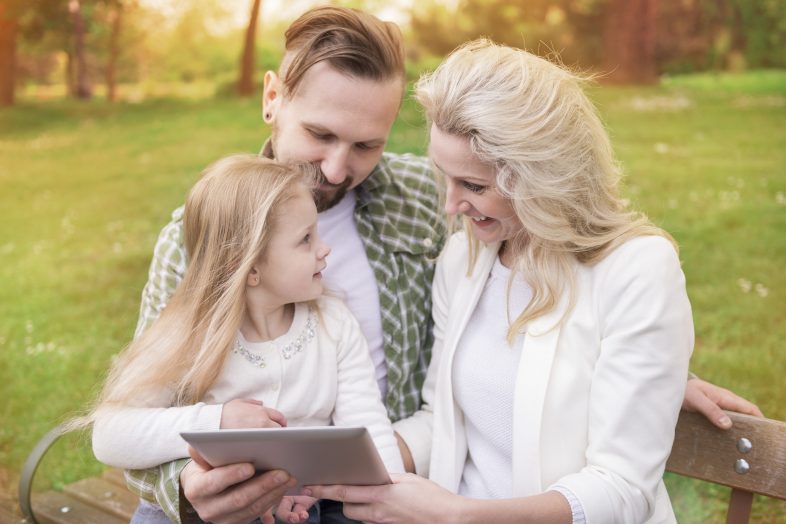
Magic of outdoor learning
- February 14, 2021
- Early child development
The magic and wonder of nature is front and centre on Outdoor Classroom Day, this week Thursday 5 November. Swing open the doors and swap the indoors with the outside classroom to prioritise nature and embrace this year’s theme, Love the Outdoors!
If ever we needed to celebrate our natural world and be grateful for spending time outside it has been 2020. Coronavirus has been a disruption like no other, especially as lockdowns have meant limited or no access to the outdoors for many children and their families.
With a focus on fun, this global campaign is about more than one day; it is a catalyst to inspire more time outdoors every day. Its driving force is to inspire and celebrate outdoor learning and play. Outdoor Classroom Day has grown from a grassroots movement back in 2011 with just a handful of schools participating, to a popular international campaign involving more than nine million children from South Africa.
Targeted primarily at schools, Outdoor Classroom Day is a celebration easily applied to early education. Simple adjustments to planned activities and learning opportunities to ensure they are age appropriate, will make it easier for younger children to reap the benefit of outdoor playtime, and educators are supported in this through a range of resources.
Early education centres can join the movement online. It’s also a great opportunity to engage with families and promote Outdoor Classroom Day to them as part of your program. There are plenty of home-based play ideas along with guidance on the importance of outdoor playtime for young children.
To help educators plan activities there’s a rich selection of resources targeted at different age groups as well as a library containing reports, articles and an easy to follow guide on how to get involved with Outdoor Classroom Day. There’s also a social media campaign for sharing ideas and activities on how families and schools across the world are getting outdoors to learn and play all year round.
The wonder of outdoor play
Research overwhelmingly supports the importance of providing children with opportunities for outdoor play. Just by being outdoors, children move more, sit less and play longer. Outdoor play offers benefits such as improved self-confidence, self-awareness and decision-making. Significantly, time spent outdoors boosts mental health, which has spiked in the community during the pandemic.
Getting outdoors and closer to nature – which can be as simple as a child watching clouds, feeling the wind or squishing mud through their toes – is an integral part of the magic of childhood. The benefits extend beyond physical fun, fresh air and explorations. Numerous studies have shown that spending time outdoors is a necessity.
Recognition of the importance of outdoor play and immersion in nature for whole child development has a long history in early childhood education.
The word “kindergarten” literally translates into “children garden,” and was coined by German educator Friedrich Froebel around the 1840s. Froebel considered natural spaces as an ideal environment for young children. He believed that through gardening, exploration and outdoor playtime children develop an understanding of the natural world, begin to appreciate its beauty and learn to take care of it.
Outdoor classroom activities and ideas
When you set up your outdoor classroom area, choose natural resources, equipment and materials and plan open-ended experiences for children. Learning through Landscapes, a UK charity organisation, has oodles of great outdoor play ideas online plus there are super-fun activities available on the Outdoor Classroom Day website. Here are some ideas to get you started:
- Musical water play: This is as simple as placing a few mixing bowls, pot lids and strikers in the water play trough and saying something like “I’ve put musical instruments in the water play trough”. Then stand back and see what happens. This is about exploration and learning through the joy of noisy, wet, free play.
- Outdoor symphony: Encourage children to listen to everything going on outside and think about different ways they can recreate and record the sounds such as by drawing a sound that is long or one that is loud.
- Bean teepee playhouses: These beautiful nature-based creations are inexpensive, play elements that create an inviting cubby for imaginative games. Use bamboo posts, sturdy pots and invite children to plant a vigorous edible climber, such as beans, then watch it grow and eventually blanket the teepee.
- Egg carton greenhouse: This can get messy but that’s the idea. Children need to get their hands dirty as it exposes them to microbes that help them build immunity. Pick up a collection of seeds, include herbs and flowers – sunflowers create an amazing display – and little hands can get busy with soil, seeds and water to grow something to take home or to add to the outdoor garden. You could even paint some pots and create family gifts.
- Mud luscious play: Kids love mud. It offers unique, hands-on sensory experiences, and hours of delight. Be prepared to get messy with activities including a mud kitchen, mud art, mud handprints and many more muddy marvels.
- Colour scavenger hunt: Unbelievably easy to organise, this is a great activity to promote to families. Either cut up coloured paper or just print out colour swatches that kids can paste on paper bags. Children can colour match natural items like stones, twigs and leaves from the playground and place these items in the bag to complete the hunt.
Engage families with Outdoor Classroom Day
By involving families as partners in Outdoor Classroom Day you can bridge the gap between child care and home making families feel more engaged with their child’s development. Many studies have suggested strong parent-teacher partnerships can help children develop positive self-esteem and motivate them to learn.
Communicate your plans for Outdoor Classroom Day and offer families suggestions on how they can be involved. You might like to send activity ideas home so parents can experience the benefits of outdoor learning and gain understanding about the value of children having access to natural materials and unstructured time outdoors.



Recent Comments